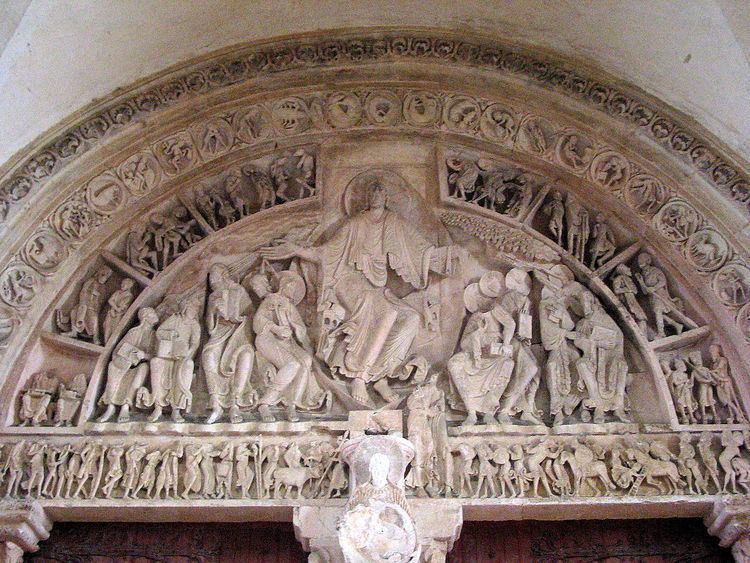 | ||
In architecture, a tympanum (plural, tympana) is the semi-circular or triangular decorative wall surface over an entrance, door or window, bounded by a lintel and arch. It often contains sculpture or other imagery or ornaments. Most architectural styles include this element.
In ancient Greek, Roman and Christian architecture, tympana usually contain religious imagery, when on religious buildings. A tympanum over a doorway is very often the most important, or only, location for monumental sculpture on the outside of a building. In classical architecture, and in classicising styles from the Renaissance onwards, major examples are usually triangular; in Romanesque architecture, tympana have a semi-circular shape, or that of a thinner slice from the top of a circle, and in Gothic architecture they have a more vertical shape, coming to a point at the top. These shapes naturally influence the typical compositions of any sculpture within the tympanum.
Bands of molding surrounding the tympanum are referred to as the archivolt.
In medieval French architecture the tympanum is often supported by a decorated pillar called a trumeau.
